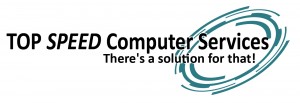Is Your Technology Hurting Your Business?
 For many businesses, Technology has been addressed through convenience, immediate necessity, and biased advice instead of using a strategically planned path, and due diligence. Convenience, immediate necessity and biased advice create a Technology hurt that affects your bottom line. Your Technology hurt could be as simple as a single computer business purchasing a brand-named computer on special that fits the budget instead of the 3-5 year need, costing you more money in efficiency than the additional money you would have paid getting the computer your business really needed. The Technology hurt can also be very complex – involving storage, licensing, network infrastructure, data backups and many other items and concerns.
For many businesses, Technology has been addressed through convenience, immediate necessity, and biased advice instead of using a strategically planned path, and due diligence. Convenience, immediate necessity and biased advice create a Technology hurt that affects your bottom line. Your Technology hurt could be as simple as a single computer business purchasing a brand-named computer on special that fits the budget instead of the 3-5 year need, costing you more money in efficiency than the additional money you would have paid getting the computer your business really needed. The Technology hurt can also be very complex – involving storage, licensing, network infrastructure, data backups and many other items and concerns.
The path of least resistance is a very common electrical term and it’s precisely how electricity travels, this is also how many businesses address their Technology assets. In my short time in the Information Technology industry I’ve seen these examples create Technology hurts;
· I need ‘X’ computers with ‘A, B and C’ features that cost ‘Z’ and in ‘Y’ time frame. The majority of the time, the cost or time frame is an unreal figure for computer(s) that are unable to perform and function effectively for beyond the first 12 months. How often have you talked to fellow business owners and managers who are having problems with a “new” computer and already looking to replace it?
· My computer/server meets the program minimum requirements. Program minimum requirements are baselines and just meeting the minimum requirements allows you functionality but performance can be severely lacking.
· I bought a major brand computer/server and they should know what they’re doing. The simple truth is they’re in business and they receive directives to push certain products over others that might not be the best for your business. Why? They do this because they get better kick backs from suppliers, need to move older inventory, it fits within your exact budget and several other reasons that don’t necessarily help you make the best choice and investment for the long term. They want to close the sale.
o Another common concern for major brand computer/server is parts such as power supplies and memory. Power supplies and memory are commonly proprietary and you can’t use another manufacturer’s equipment to get yours functioning again. Major brands like to make you dependent upon them and the steps you have to take to get warranty work taken care of can be daunting.
· The electrician installed my network cabling. I’ve seen the results of low voltage cabling from some local electricians and it’s unnerving, because many of them are used to really yanking on electrical wire, however network cable is nowhere near as durable. I’ve seen damaged network cables from overly rough treatment. Additionally you don’t want your low voltage cabling running next to or near the high voltage electrical wiring – this will create interference with your network cable at some point.
· I bought this computer/server this way just a year ago. It sounds very general, I know, but here’s the specific need that was overlooked – it was not purchased with future needs in mind and now can’t be expanded without a major overhaul. Make sure your equipment can easily grow with your business needs.
 These are just some of the general examples of how Technology hurts are created. There are many more out there.
These are just some of the general examples of how Technology hurts are created. There are many more out there.
The survival and success of many businesses is contingent upon the effectiveness of their Technology. Here are the items that should be involved in the critical step of planning and creating efficient Technology assets:
· Budgets – not just an upfront dollar value but also a monthly value for projects that may provide better solutions out of the upfront dollar values reach, with long term additional spending requirements included. Take the same long term goal and use a different approach.
· Necessities and Wants – Knowing the difference between what your business needs and wants is pretty straight forward. Remember to mention your wants because those can affect the options available and drastically affect your Technology in the long run. It will also allow your IT provider to show you ways your technology can later be expanded to include some of those wants. If you don’t tell your provider these things they cannot help you plan to get there.
· Planning – make sure you have a plan no matter if you only have one computer or one thousand, plan to make sure you succeed.
· Unbiased Advise – is the most difficult one. Many businesses who have established relationships with their current IT Service Providers or their internal IT Staff will find that they have personal agendas. IT Service Providers might not want to mention what might be best technology for you because they don’t currently understand or work with the technology, the same is true with internal IT Staff. A good example of that is Virtualization. Virtualization is a new technology with limitless possibilities and can ease budget concerns for many business’, but because it is so new you have to look around to find a company ready and able to provide and support virtualization.
It’s always a good idea to get a second opinion to validate and/or effectively evaluate other options to make sure your Technology is an asset and not a hurt.


